Life in Finland Part 1: Free-range Children.
The little ones are everywhere, mostly unsupervised, and it's okay. Actually, it's better than okay.
Note: In my introductory post I noted that I would be writing about four main topics, one of which is everyday life in Finland. This is the first post in that series, and I plan on coming back to this topic regularly. I hesitate to say how often as I am still finding my rhythm when it comes to writing these posts.
Disclaimer: I am not an expert on all things Finland, I am only offering my perspective- that of an American who has been living here for almost eight years. Part of the fun will be having my Finnish friends and colleagues explaining how things actually work as they have a laugh at my expense. I welcome your comments and assistance, and apologize in advance for my errors!
So Many Young Children- Out by Themselves!
My family has hosted a fair number of visitors to Finland over the past seven years or so. In addition to the normal, expected differences that our friends and colleagues noted to us, almost all of them mentioned their surprise at seeing young children out and about by themselves. We noted the same thing when we first arrived here.
It is true. Children in Finland enjoy a degree of autonomy that they do not in the United States. Before moving here, we lived in Fairfax County, Virginia, which helpfully provides this guidance on caring for children1:
8 years old and younger should always be in the care of a responsible person. Children this age should never be left unsupervised in homes, cars, playgrounds or yards.
These ‘guidelines’ stand in stark contrast to Finland, where eight-year-olds are expected to walk or bike to and from school by themselves and once home, to take care of themselves until their parents return from work.
What about daycare?
Yes, there is daycare- subsidized2 daycare- but it is not what most of my American friends and visitors imagine it to be. For example, in our town there are seven daycare providers, four run by the town and three that are private. None accept children older than six. And most close by 1700. (This closing time, and the fact that daycares only take children at age one, are notable and I will save them for a different post).
Why six? First grade starts in the calendar year in which a child turns seven, and daycare ends when your child starts school. Schools offer a kind of care for first and second graders, known as iltäpäiväkerho, (afternoon club) or simply iltis. There is also a morning version, meaning that children *can* be supervised from 0730-1700 every day during first and second grade. However, parents can (and do) choose to allow their children to “sign themselves out” from iltis when they are ready to go home. (Another difference is that there is no “set” school day. Some days your student starts at 0815, others 1000. Ending times also vary. Yet another topic to address in an upcoming post.)
Example: If your child has a December birthday, they will begin First Grade in August at age six and can get after school care through first and second grade. However, when starting third grade at age eight, there is no care available unless one pays for their own in-home care. But no one does this. None of my children even wanted to attend iltis in second grade. It’s embarrassing.
Getting to school.
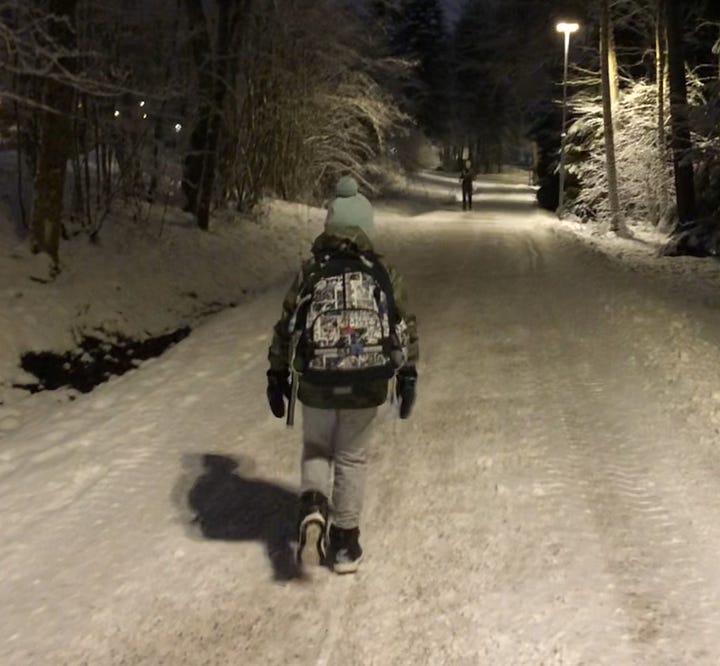
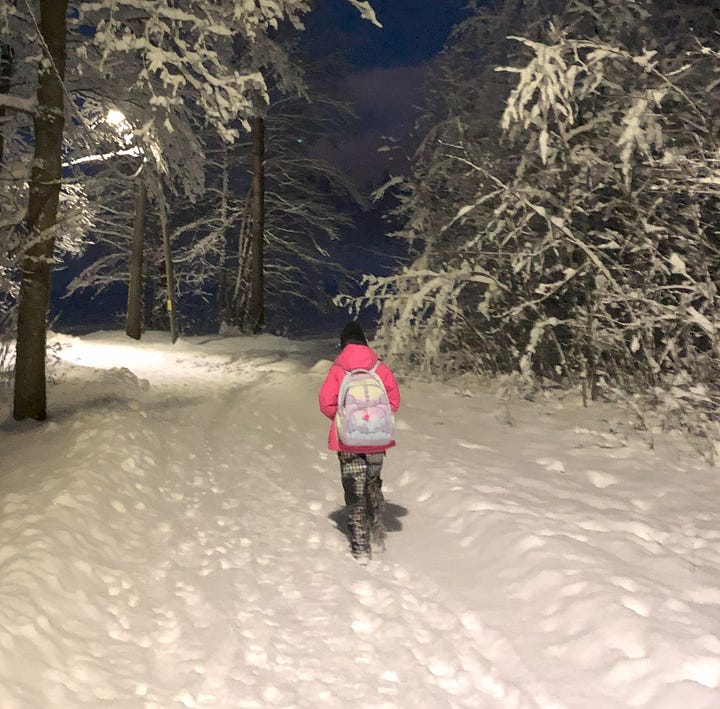
When we lived in Fairfax County, I would see parents driving their children to the bus stop. We lived in a nice housing development, and the bus stop was centrally located. The longest possible walk was probably half of a mile.
During the 2017-18 school year here, I received an e-mail from the elementary school principal asking parents not to drive their children to school. In the note he discussed the benefits of walking as well as the dangerous condition caused by having too many cars trying to enter and leave the small parking lot. He noted that no student had to walk more than two or three kilometers to school.
This is but one sign of the clear expectation that children should walk to and from school, an expectation that holds regardless of weather. (Another Finnish cultural difference for a future post.)
Every August as the school year begins, teachers in orange vests stand watch at the street crossings near the school. This lasts only for the first couple of days, mainly to remind passing drivers that they should be more cautious. There are no crossing guards. Second graders take a bicycle test (both written and practical). After passing it, the school permits them to bike to and from school when snow and ice conditions allow it to be done safely.
Playgrounds, stores, public buses.
Our guests saw young children walking to and from school by themselves, but also at playgrounds, in stores, walking down the street, and riding the bus. It is entirely normal to send your young child down to the store for milk and bread. Children learn some of this in school (for example, riding the bus) but largely it happens as a result of cultural expectations.
Yes, children do get bumps and bruises at the playground, they sometimes get into arguments or small fights, and bullying does happen. But children learn to navigate their environment, settle disputes on their own, what situations are strange and should be avoided, and when to seek help.
This was a challenging mindset change for us. We gradually adjusted to it throughout our first year, and our children rose to meet the challenge. Now, as we still have young children, we find this to be one of the most positive aspects of life in Finland. It is one of the major reasons that we decided to stay after my retirement.
Independence Scales with Age.
We also have young teenagers. At twelve and thirteen, we began allowing them to take the bus or train by themselves to visit with friends, go shopping in Helsinki (manga/anime/game stores are favorite destinations), and even to go to the local amusement park. Yes, they make mistakes. Occasionally they will miss their train, get on the wrong bus (or the right bus in the wrong direction). Usually, they figure it out by themselves, adding to their confidence and independence. If needed, we are just a phone call away.
Concluding thoughts:
Children are treated very differently here in Finland, and as a result you do see young ones out and about- by themselves- everywhere, all the time. It did take us some time to get used to it, but we learned that our children are more capable than we thought. As a result, they are growing up more independently, gaining confidence, and learning how to solve problems on their own. We’re quite proud of them.
Thanks for reading, subscribing, and spreading the word.
Like by pressing the heart if you want to see more posts like this and consider sharing with a friend.
All the Best,
PGR

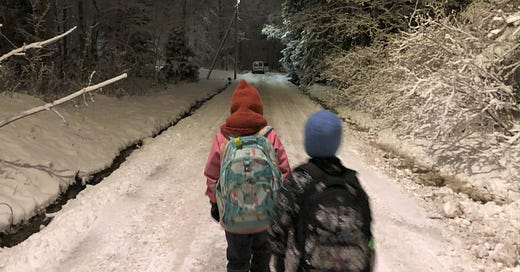




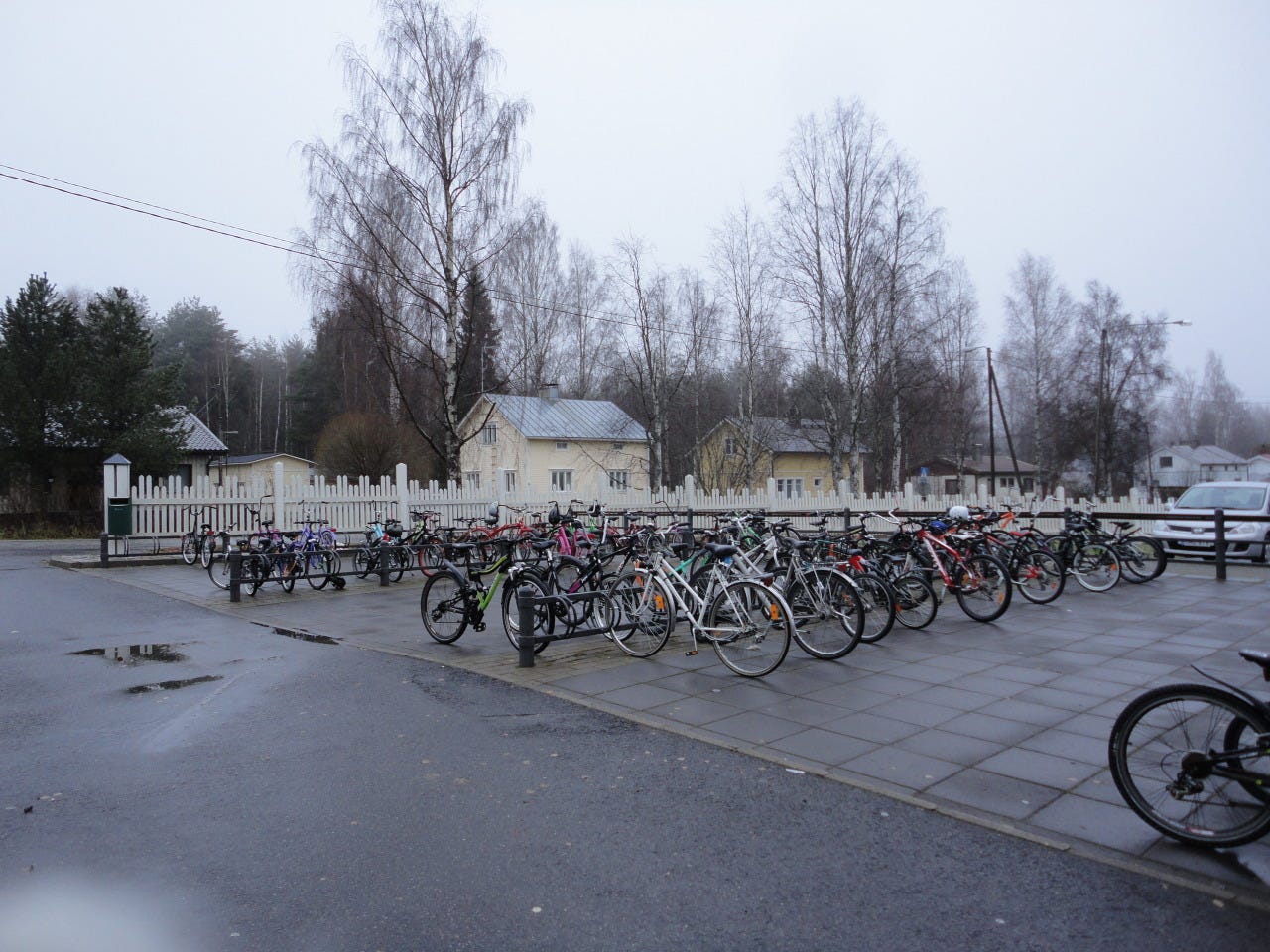
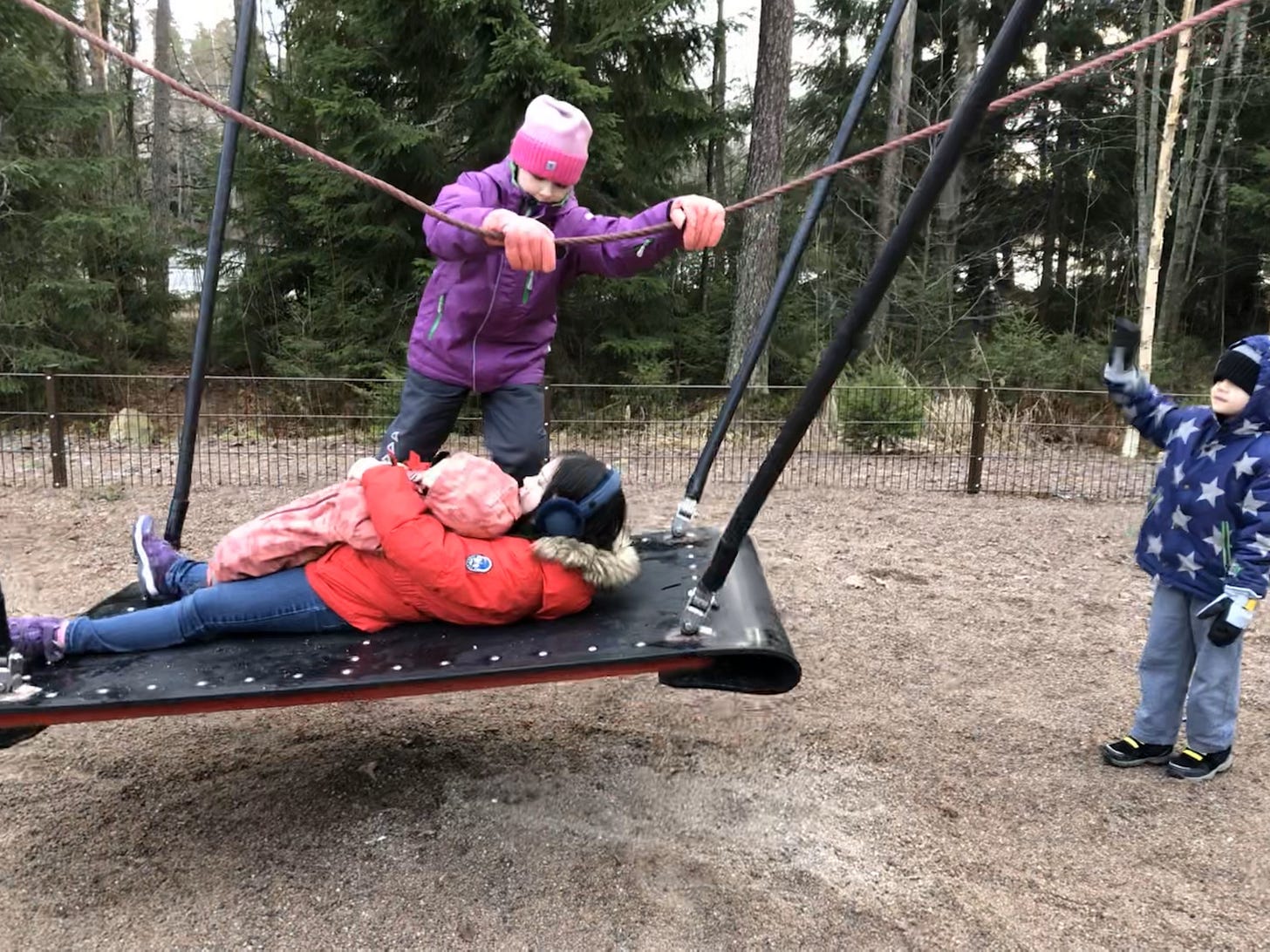
Exactly how I grew up up in the early 60s!